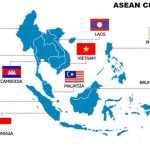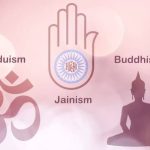
• Cultural institutions are places that have a clear mission to preserve, interpret, and share cultural, scientific, and environmental knowledge, as well as to support activities that teach and inform people about how culture, history, science, and the environment are related.
Museums, libraries, historical or botanical societies, and community cultural centres are all examples of cultural organisations.
Table of Contents
- 1 Archaeological Survey of India
- 2 Lalit Kala Academy
- 3 Sangeet Natak Academy
- 4 Sahitya Academy
- 5 National Mission for Manuscripts:
- 6 Indian National Trust for Art and Cultural Heritage (INTACH):
- 7 Indira Gandhi National Centre for the Arts (IGNCA):
- 8 Centre for Cultural Resources and Training (CCRT):
- 9 National Archives of India (NAI)
- 10 Indian Council for Cultural Relations (ICCR):
- 11 ICHR (Indian Council of Historical Research)
- 12 The Nehru Memorial Library and Museum
Archaeological Survey of India
The Archaeological Survey of India (ASI) is India’s main organisation for archaeological study. It reports to the Ministry of Culture.
Its main goal is to protect the physical and visible history found in archaeological sites and historical ruins.
• ASI is run by the 1958 Ancient Monuments and Archaeological Sites and Remains Act.
• The Antiquities and Art Treasure Act of 1972 is another important rule that guides the work of the ASI.
Lalit Kala Academy
• In 1954, the National Academy of Art was founded.
It is the government’s top cultural body for visual arts in India. It is an independent body that is fully funded by the Ministry of Culture. The Akademi has been helping the country in the arts long before the rest of the world realised how important Indian art was. It has created, preserved, and documented a permanent collection that shows the vitality, complexity, and unfolding patterns of modern and contemporary art.
Sangeet Natak Academy
India’s national school of music, dance, and drama, the Sangeet Natak school, was one of the first things to help make India into the modern country it is today.
• Because the arts are temporary and needed to be preserved, a democratic system was put in place so that anyone could learn, practise, and spread the arts. • In 1945, the Asiatic Society of Bengal put forward a plan to create a National Cultural Trust with three academies: one for dance, drama, and music; one for letters; and one for art and architecture.
After the country got its independence, it led to the creation of three national schools. The first of these was the National Academy, which is called the Sangeet Natak Akademi. It was set up by a decision from the Ministry of Education.
• The Government turned the Sangeet Natak Akademi into a society in 1961 and registered it under the Societies Registration Act, 1860 (as changed in 1957).
Sahitya Academy
• The National Academy of Letters of India supports literature in 24 of India’s languages.
It runs programmes, gives awards and fellowships to writers of Indian languages, and releases books all year long in 24 official languages. Over the past 60 years, the Akademi has put out over 7,000 books in 24 languages.
The Akademi prints both original works and translations of fiction, poetry, drama, and literary criticism from ancient, mediaeval, early modern, and modern times. Sahitya Akademi puts out three journals: Indian Literature (every two months in English), Samkaleena Bhartiya Sahitya (every two months in Hindi), and Sanskrit Pratibha (every three months in Sanskrit).
• The Akademi works to promote good children’s books.
• The Akademi has offices in Kolkata, Mumbai, Bengaluru, and Chennai, as well as its main office in New Delhi.
The most important literature awards in India are the Akademi Awards.
National Mission for Manuscripts:
The Ministry of Culture started the National Mission for Manuscripts in February 2003 to save the most important part of our cultural heritage, which are manuscripts.
• The mission’s goal is to find and keep India’s huge collection of manuscripts.
• The Mission is an ambitious five-year project that wants to do more than just find, catalogue, and save India’s manuscripts. It also wants to improve access, raise knowledge, and encourage the use of manuscripts for educational purposes.
Indian National Trust for Art and Cultural Heritage (INTACH):
Founded in 1984, INTACH is an independent NGO that works to preserve Indian art and culture. Its motto is “Dedicated to Conservation”.
Indira Gandhi National Centre for the Arts (IGNCA):
This is an independent organisation that has been around since 1985. Its mission is to study, restore, show, and share art.
Even though they focus on the visual arts, they encourage critical and artistic writing. The main goal of the IGNCA is to become a well-known centre for India’s oral and visual arts.
Centre for Cultural Resources and Training (CCRT):
The Centre for Cultural Resources and Training (CCRT) was set up in 1979 at the request of Dr. Kapila Vatsyayan and Smt. Kamala Devi Chattopadhyay. It was set up by India’s Ministry of Culture to connect education and culture.
Even though CCRT is an independent institution, the government has told it to strengthen its structure. CCRT has its headquarters in New Delhi and three Regional Centres in Udaipur in the west, Hyderabad in the south, and Guwahati in the northeast to help spread Indian art and culture to more people.
National Archives of India (NAI)
• During the time when India was ruled by the British, a group was set up to keep track of official records.
• According to the Ministry of Culture’s Memorandum on the National Archives of India, NAI’s main goals are: Giving more people access to record collections to help preserve India’s written cultural heritage and make sure it gets passed down from generation to generation.
Systematically organising and keeping track of a huge number of records. Building stronger relationships between archives and archivists, especially on a national and foreign scale.
Indian Council for Cultural Relations (ICCR):
• The ICCR was set up by the Ministry of Culture to run programmes that show off Indian culture around the world.
• It was started in 1950 by Maulana Abul Kalam Azad, who was very interested in bringing people from different countries and cultures together.
• The ICCR’s job is to come up with and carry out policies and programmes that are deeply rooted in India’s cultural ties with the rest of the world.
• The ICCR supports a wide range of foreign programmes for the visual and performing arts.
ICHR (Indian Council of Historical Research)
• The Societies Registration Act of 1972 led to the creation of the Indian Council of Historical Research (ICHR).
• It pays for itself, and the University Grants Commission (UGC) gives it money.
• It was set up to help spread and keep Indian culture alive.
• It was a place where historians could talk about their ideas.
The Nehru Memorial Library and Museum
• In 1929 and 1930, Sir Edwin Lutyens made plans for the Nehru Memorial Museum and Library (NMML) for the imperial city.
Teen Murti House was the official home of the last British Commander-in-Chief. After the British left India, it became the home of Pandit Jawaharlal Nehru, India’s first Prime Minister.
He lived here for 16 years, and after he died in 1964, the government turned Teen Murti House into a museum and library in his name.
















